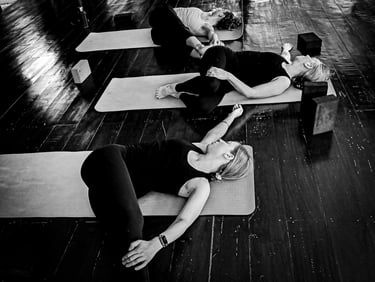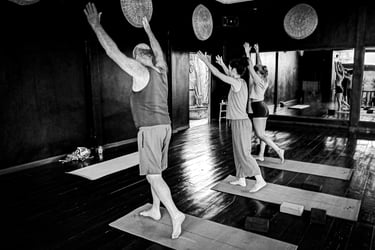Gentle & Challenging


To raise energy levels in our classes, we use breath-synchronised movement and sequences that alternately contract and release muscle groups. This supports circulation, encouraging the delivery of oxygen and nutrients throughout the body.
Standing poses, which engage large muscle groups and elevate heart rate, tend to feel energising and warming. In contrast, poses on hands and knees, which emphasise grounding and flexibility, are typically less energising—sometimes even cooling. Reclining postures, where the body is least challenged by weight or balance, are generally the most cooling of all.
We understand it may seem contradictory to describe our classes as both gentle and challenging. The gentleness comes from the breath-led pacing of movement. Yet the challenge lies in sustaining that steady rhythm as energy levels rise.
Think of it like climbing a footbridge: the steps are evenly spaced and not physically demanding in isolation. But to maintain a consistent breath throughout the climb—that’s the real work. If the breath falters, breathlessness follows. And you're still only halfway across the bridge.


While yoga styles are often labelled as gentle or vigorous, these terms can be misleading. The internal experience varies greatly, and even a seemingly gentle practice can generate considerable internal heat and activation.
Labelling yoga as either gentle or vigorous overlooks the fact that internal energy is not solely dictated by visible effort. Certain pranayama techniques—such as Kapalabhati, Ujjayi, and Bhastrika—can dramatically raise body temperature and induce perspiration. These practices stimulate the nervous system and internal organs, showing that inner intensity can match, or even exceed, the demands of more physically vigorous styles.
It’s for this reason we find gentle and challenging a more accurate description than the often vague and difficult-to-explain term moving meditation.
Other posts
